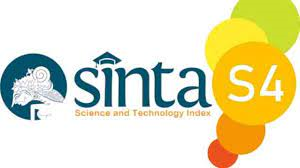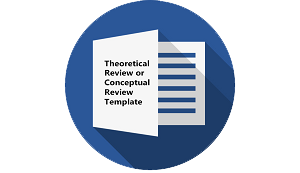The Impact of Direct and Indirect Feedback on Idiom Translating Skill of Iranian EFL College Students
DOI:
https://doi.org/10.30957/ijoltl.v4i3.605Keywords:
direct feedback, indirect feedback, idioms, EFL learnersAbstract
This study examines the effectiveness and efficacy of teachers' direct vs. indirect feedback on students' idiom translating skills. To achieve this purpose, 23 Iranian university students from two intact classes were randomly assigned to two experimental groups: direct feedback group in which the teacher located and gave the correct translation of idiom and indirect feedback group in which the teacher only noted the number of wrong translations of idioms. The study lasted 10 weeks in the course of which the participants had to translate a short text from “Idioms and Metaphorical Expressions in Translation†by “Ghaffar Tajalliâ€. The study included a pre-test, a treatment for experimental groups, and a post-test to see whether or not the treatment had been effective. The statistical analyses indicated the effectiveness of direct feedback inaccurate use of the translation of idioms. Therefore, the results can provide some useful insights into translating courses, syllabus design, and translator training courses.
Downloads
References
Al-Jarrah, R.S. (2016). A suggested model of corrective feedback provision. Ampersand, 3, 98 107.
Baker, M. (1992).In other words: A course book on translation. London:Routledge.
Baker, M. (2011).In other words: A course book on translation. London:Routledge.
Bates, L., Lane, J., & Lange, E. (1993).Writing clearly: Responding to ESL compositions. Boston: Heinle&Heinle.
Bitchener, J. (2008). Evidence in support of written corrective feedback. Journal of Second Language Writing,17, 102-118.
Bitchener, J., Young, S., & Cameron, D. (2005). The effect of different types of corrective feedback on ESL student writing. Journal of Second Language Writing, 9, 227- 258.
Burke, D. (1995). Street talk 3: The best of American idioms. The US: Optima Books.
Chandler, J. (2003). The efficacy of various error feedbacks for improvement in the accuracy and fluency of L2 student writing. Journal of Second Language Writing, 12, 267- 296.
Cook, P., Fazly, A., Stevenson, S. (2008). The VNC-Tokens Dataset. In Proceedings of the LREC Workshop: Towards a Shared Task for Multiword Expressions (MWE 2008), Marrakech, Morocco, June.
Dollerup, C. (1994) Systematic feedback in translation teaching.In C.
Dollerup& A. Lindegaard (Eds,) Teaching translation and interpreting 2 (pp. 21-132).Amsterdam/Philadelphia: Benjamins.
Ellis, R. (2009). A typology of written corrective feedback types.ELT Journal, 63(2), 97-107.
Farrokhi, F., &Sattarpour, S. (2012). The effects of direct written corrective feedback on improvement of grammatical accuracy of high-proficient L2 learners. World Journal of Education, 2(2), 49-57.
Ferris, D. R. (1995). Can advanced ESL students be taught to correct their most serious and frequent errors? CATESOL Journal, 8, 41-62.
Ferris, D. R. (1999).The case for grammar correction in L2 writing classes: A response to Truscott (1996). Journal of Second Language Writing, 8(1), 1–10.
Ferris, D. R (2002).Treatment of error in second language student writing. Ann Arbor, MI: The University of Michigan Press.
Ferris, D. R. (2004). The ‘grammar correction’ debate in L2 writing: Where are we, and where do we go from here? (And what do we do in the meantime...?). Journal of Second Language Writing, 13(1),49–62.
Ferris, D. R. (2006). Does error feedback help student writers? New evidence on the short- and long- term effects of written error correction. In K. Hyland & Hyland (Eds.), Feedback in second language writing: Contexts and issues (pp. 81- 104). New York: Cambridge University Press.
Ferris, D. R., Chaney, S. J., Komura, K., Roberts, B. J., & McKee, S. (2000).
Perspectives, problems, and practices in treating written error. In Colloquium presented at International TESOL Convention, Vancouver, B.C., March 14–18, 2000.
Ferris, D. R., &Hedgcock, J. S. (1998). Teaching ESL composition: Purpose, process, and practice. Mahwah, NJ: Lawrence Erlbaum Associates.
Ferris, D., &m Hedgcock, J. S. (2005).Teaching ESL composition: Purpose, process, and practice. Mahwah, NJ: Lawrence Erlbaum.
Ferris, D., & Roberts, B. (2001).Error feedback in L2 writing classes. How explicit does it need to be? Journal of Second Language Writing, 10(3), 161- 184.
Hendrickson, J. (1978). Error correction in foreign language teaching: Recent theory, research and practice. Modern Language Journal, 62, 387-398.
Hendrickson, J. (1980). The treatment of written work.Modern Language Journal, 64, 216-221.
Komura, K. (1999). Student response to error correction in ESL classrooms. Master’s thesis, California State University, Sacramento.
Lalande, J.F. (1982). Reducing composition errors: An experiment.Modern Language Journal, 66(2), 140- 9.
Larson, M. L. (1984). Meaning- based Translation: Lanham: University Press of America.
Lee, I. (1997). ESL learners’ performance in error correction in writing: Some implications for teaching.System, 25(4), 465- 477.
Lee, I. (2008). Understanding teachers’ written feedback practices in Hong Kong secondary classrooms.Journal of Second Language Writing, 17, 69-85.
Lee, S. H. (2003). ESL learners' vocabulary use in writing and the effects of explicit vocabulary instruction. System, 31, 537-561.
Leki, I. (1990). Coaching from the margins: Issues in written response.In B. Kroll (Ed.), Second language writing: Research insights from the classroom (pp. 57- 68). New York: Cambridge University Press.
Longman Idioms Dictionary. 1998. UK: Longman, England.
Makkai, A. (1972). Idiom structure in English. The Hague: Mouton & Co.
N.V. Pica, T. (1983). Adult acquisition of English as a second language under different conditions of exposure. Language Learning, 33, 465e497.
Polio, C., N. Fleck, & N. Leder. (1998). “If only I had more timeâ€: ESL learners’ changes in linguistic accuracy on essay revisions. Journal of Second Language Writing, 7, 43- 68.
Rennie, C. (2000). Error feedback in ESL writing classes: What do students really want? Master’s thesis, California State University, Sacramento.
Robb, T., Ross, S., &Shortreed, I. (1986). Salience of feedback on error and its effect on EFL writing quality. TESOL Quarterly, 20(1), 82-94.
Roberts, B. J. (1999). Can error logs raise more than consciousness? The effects of error logs and grammar feedback on ESL students’ final drafts. Master’s thesis, California State University, Sacramento.
Schmidt, R. (2001). Attention. In P. Robinson (Ed), Cognition and second language instruction (pp. 3- 32). Cambridge: Cambridge University Press.
Seguinot, C. (1991). A Study of Student Translation Strategies.In S. Tirkkonen (Ed.), Empirical Studies in Translation and Intercultural Studies, (pp. 79-88). Tubingen: Gunter NarrVerlag.
Sheen, Y. (2007). The effect of focused written corrective feedback and language aptitude on ESL learners' acquisition of articles. Tesol Quarterly, 41, 255-283.
Sheen, Y., Wright, D., &Moldawa, A. (2009). Differential effects of focused and unfocused written correction on the accurate use of grammatical forms by adult ESL learners. System, 37, 556-569.
Sheppard, K. (1992). Two feedback types: Do they make a difference? RELC Journal, 23, 103–110.
Shikano, M. (2015).The teacher-written feedback in translation education. The Bulletin of the Center for International Education, 16, 1-6.
Shore, S. (2001). Teaching Translation. In E. Steiner & C. Yallop (Eds) Exploring Translation and Multilingual Text Production: Beyond Content, (pp. 249-276).Berlin: Mouton de Gruyter.
Shreve, G. M. (2002) Knowing Translation: cognitive and experiential aspects of translation expertise from the perspective of expertise studies. In A. Riccardi (Ed.), Translation Studies. Perspectives on an Emerging Discipline, (pp. 150-71). Cambridge: Cambridge University Press.
Steinskog, DJ. (2007). A cautionary note on the use of the Kolmogorov- Smirnov test for normality. American Meteor Soc. 135:115 1–7.
Storch, N. & Wiglesworth, G. (2010a). Learners’ processing, uptake, and retention of corrective feedback on writing. Studies in Second Language Acquisition, 32, 303- 334.
Storch, N. & Wigglesworth, G. (2010b). Students’ engagement with feedback on writing: the role of learner agency/ beliefs. In R. Batstone (Ed.), Sociocognitive perspectives on language use and language learning, (pp. 166- 185). Oxford, United Kingdom: Oxford University Press.
Tajalli, G. (2006). Idioms and metaphorical expressions in translation, Tehran: SAMT.
Trrefry, D. (2006). Collins English Dictionary. Glasgow, UK: HarperCollins Publishers.
Truscott, J. (1996). The case against grammar correction in L2 writing classes. Language Learning, 46, 327–369.
Truscott, J. (2007). The effect of error correction on learners’ ability to write accurately. Journal of Second Language Writing, 16, 255-272.
Van Beuningen, C., De Jong, N., & Kuiken, F. (2008). The effect of direct and indirect corrective feedback on L2 learners' written accuracy. ITL International Journal of Applied Linguistics 156, 279-296.
Van Beuningen, C., De Jong, N., &Kuiken, F. (2012). Evidence on the effectiveness of comprehensive error correction in second language writing. Language Learning, 62 (1), 1-41.
Steendam, E. V.,Rijlaarsdam,G. C. W., Van den Bergh, H. H., Sercu, L.(2014).The mediating effect of instruction on pair composition in L2 revision and writing. In Instructional Science, 42, 905-927.
Walz, J. C. (1982). Error correction technique for the foreign language classroom. Language in education: Theory and Practice Series. Washington DC: Centre for Applied Linguistics.
Downloads
Published
How to Cite
Issue
Section
License
Authors who publish with this journal agree to the following terms:
- Authors retain copyright and grant the journal right of first publication with the work simultaneously licensed under a Creative Commons Attribution-ShareAlike 4.0 International License that allows others to share the work with an acknowledgement of the work's authorship and initial publication in this journal.
- Authors are able to enter into separate, additional contractual arrangements for the non-exclusive distribution of the journal's published version of the work (e.g., post it to an institutional repository or publish it in a book), with an acknowledgement of its initial publication in this journal.
- Authors are permitted and encouraged to post their work online (e.g., in institutional repositories or on their website) prior to and during the submission process, as it can lead to productive exchanges, as well as earlier and greater citation of published work (See The Effect of Open Access).












